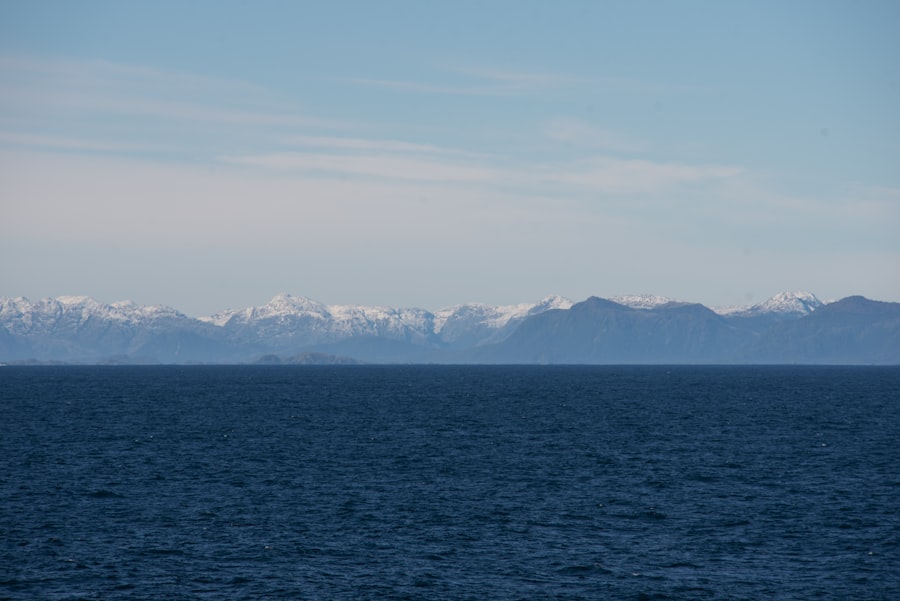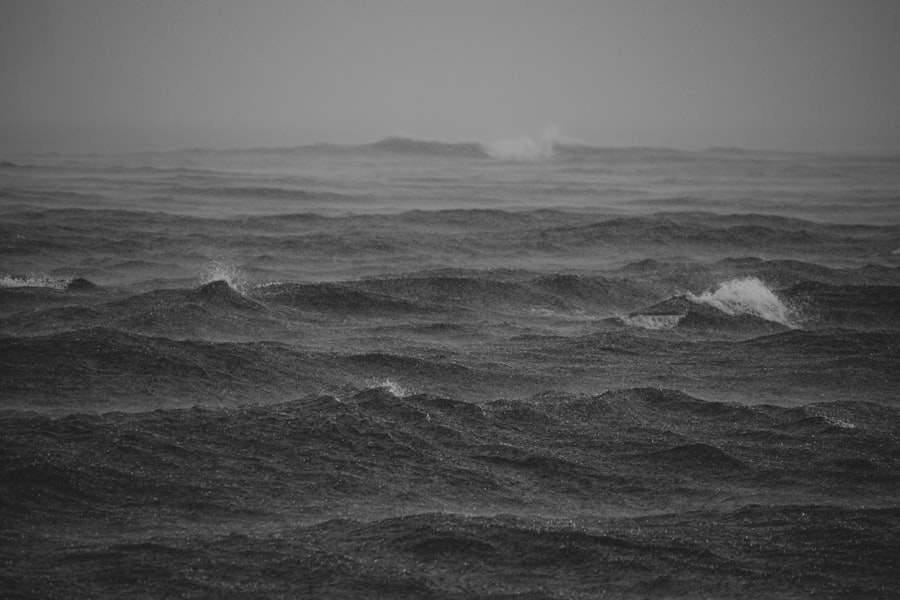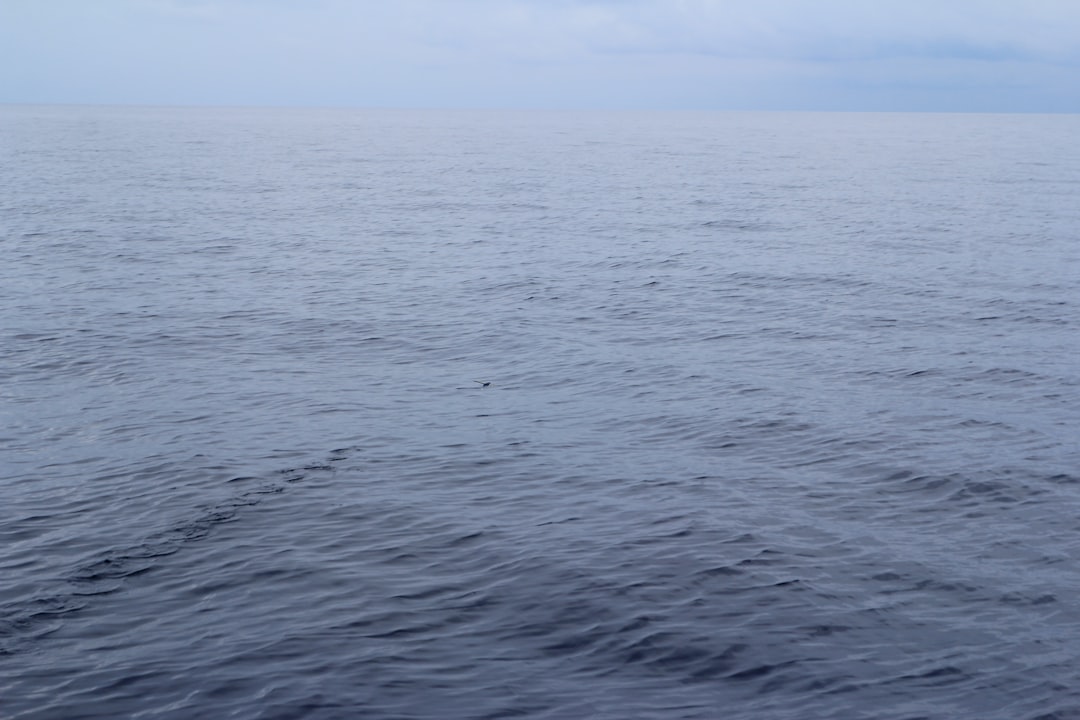The Drake Passage, a body of water situated between the southern tip of South America and Antarctica, is renowned for its tumultuous seas and unpredictable weather. Spanning approximately 600 kilometers (370 miles) in width, it serves as a critical maritime route for vessels traveling to and from the Antarctic region. The passage is named after Sir Francis Drake, the English explorer who navigated these waters in the late 16th century.
Its strategic location makes it a vital corridor for scientific research, tourism, and commercial shipping, connecting the Atlantic and Pacific Oceans. The geographical features of the Drake Passage contribute significantly to its notorious reputation. The convergence of the cold waters from the Southern Ocean and the warmer currents from the Atlantic creates a unique marine environment that is both rich in biodiversity and challenging for navigation.
The passage is characterized by deep oceanic trenches and strong currents, which can lead to sudden changes in sea conditions. Understanding these dynamics is essential for anyone planning to traverse this formidable stretch of water.
Key Takeaways
- The Drake Passage is a narrow body of water between South America’s Cape Horn and the South Shetland Islands of Antarctica, known for its rough seas and challenging navigation.
- Weather patterns in the Drake Passage are characterized by strong winds, high waves, and rapidly changing conditions, making it one of the most treacherous stretches of water in the world.
- The Drake Passage holds historical significance as the route taken by famous explorers such as Sir Francis Drake and Charles Darwin, and has been a key area for scientific research and exploration.
- The Passage is home to a diverse range of wildlife, including various species of whales, seals, and seabirds, making it a popular destination for wildlife enthusiasts and photographers.
- Safety precautions for navigating the Drake Passage include choosing a sturdy vessel, securing loose items, and following the guidance of experienced crew members to ensure a safe crossing.
Weather patterns in the Drake Passage
The weather patterns in the Drake Passage are notoriously volatile, making it one of the most challenging maritime environments in the world. The region experiences frequent storms, high winds, and rapidly changing conditions that can catch even experienced sailors off guard. The passage is influenced by the Antarctic Circumpolar Current, which flows continuously around Antarctica and contributes to the unpredictable weather patterns.
This current can generate powerful waves and swells, often exceeding 10 meters (33 feet) in height. Seasonal variations also play a significant role in the weather experienced in the Drake Passage. During the summer months, from November to March, conditions tend to be milder, attracting more vessels and tourists eager to explore Antarctica.
However, even during this period, sudden storms can arise, leading to treacherous sailing conditions. Conversely, winter months bring harsher weather, with increased chances of icebergs and severe storms that can pose significant risks to navigation.
Historical significance of the Drake Passage

The historical significance of the Drake Passage cannot be overstated.
Sir Francis Drake’s expedition in 1578 marked one of the first recorded crossings of this passage, paving the way for future exploration of Antarctica and beyond.
His journey not only expanded geographical knowledge but also highlighted the potential for trade routes that would later become vital for global commerce. In addition to its role in exploration, the Drake Passage has been a site of numerous maritime disasters throughout history. The treacherous waters have claimed many vessels, leading to a legacy of caution among sailors.
These historical events have shaped maritime practices and safety protocols that are still relevant today. The passage’s reputation as a formidable barrier has also influenced geopolitical dynamics, as nations vie for control over access to Antarctic resources and shipping routes.
Wildlife in the Drake Passage
| Species | Population | Threat Level |
|---|---|---|
| Antarctic Fur Seal | Unknown | Least Concern |
| Wandering Albatross | Approximately 25,000 breeding pairs | Vulnerable |
| Blue Whale | Unknown | Endangered |
| Antarctic Petrel | Unknown | Least Concern |
The Drake Passage is not only significant for its navigational challenges but also for its rich biodiversity. The waters are teeming with marine life, including various species of fish, seals, and whales. The nutrient-rich currents support an abundance of krill, which serves as a crucial food source for many larger marine animals.
This vibrant ecosystem attracts numerous species of seabirds, including albatrosses and petrels, which can often be seen soaring above the waves. The presence of such diverse wildlife makes the Drake Passage a prime location for scientific research and eco-tourism. Researchers study the unique adaptations of marine species to understand how they thrive in this harsh environment.
Tourists visiting the region often embark on expeditions specifically to observe these magnificent creatures in their natural habitat. However, it is essential to approach wildlife viewing with respect and caution to minimize human impact on these delicate ecosystems.
Safety precautions for navigating the Drake Passage
Navigating the Drake Passage requires careful planning and adherence to safety precautions due to its unpredictable nature. Mariners are advised to stay informed about weather forecasts and sea conditions before embarking on their journey. Utilizing advanced navigation technology can enhance safety by providing real-time data on currents and potential hazards.
Additionally, vessels should be equipped with appropriate safety gear, including life jackets, flares, and emergency beacons. Crew training is another critical aspect of ensuring safety while crossing the Drake Passage. All crew members should be familiar with emergency procedures and protocols for handling rough seas.
Regular drills can help prepare the crew for unexpected situations, such as equipment failure or medical emergencies. By fostering a culture of safety awareness onboard, mariners can significantly reduce risks associated with navigating this challenging waterway.
Strategies for minimizing the impact of rough seas

To minimize the impact of rough seas while crossing the Drake Passage, sailors can employ several strategies that enhance both safety and comfort. One effective approach is to plan crossings during periods when weather forecasts indicate calmer conditions. By monitoring meteorological data closely, mariners can identify windows of opportunity that may allow for smoother sailing.
Another strategy involves adjusting vessel speed and course in response to changing sea conditions. Slowing down during particularly rough patches can help reduce strain on both the vessel and its occupants. Additionally, utilizing stabilizers or other technological aids can enhance stability and comfort while navigating turbulent waters.
These measures not only improve safety but also contribute to a more pleasant experience for everyone onboard.
Tips for managing seasickness while crossing the Drake Passage
Seasickness is a common concern for those crossing the Drake Passage, given its notorious reputation for rough seas. To manage this condition effectively, individuals can take several proactive steps before and during their journey. One effective method is to choose accommodations on lower decks or midship areas of the vessel, where motion is less pronounced compared to higher decks or bow sections.
In addition to selecting an appropriate location onboard, individuals may benefit from over-the-counter medications designed to alleviate symptoms of motion sickness. These medications are most effective when taken before symptoms arise, so planning ahead is crucial. Natural remedies such as ginger or acupressure wristbands may also provide relief for some travelers.
Staying hydrated and consuming light meals can further help mitigate feelings of nausea during turbulent crossings.
Importance of choosing the right vessel for crossing the Drake Passage
Choosing the right vessel for crossing the Drake Passage is paramount to ensuring a safe and successful journey. Vessels designed specifically for polar waters are equipped with reinforced hulls and advanced navigation systems that enhance their ability to withstand harsh conditions. These ships often feature stabilizers that reduce rolling motion, providing a more comfortable experience for passengers.
Furthermore, selecting a vessel with experienced crew members who are familiar with navigating the Drake Passage can significantly impact safety outcomes. Knowledgeable crews understand how to respond to changing weather patterns and can implement effective strategies for managing rough seas. Ultimately, investing time in researching and selecting an appropriate vessel can make all the difference in ensuring a smooth crossing.
Navigation challenges in the Drake Passage
Navigating through the Drake Passage presents numerous challenges that require skillful seamanship and advanced technology. One significant challenge is dealing with rapidly changing weather conditions that can shift from calm to stormy within minutes. Mariners must remain vigilant and adaptable, constantly monitoring their surroundings and adjusting their course as necessary.
Another navigation challenge arises from the presence of icebergs and floating debris in certain seasons. These hazards pose risks not only to vessels but also to navigation systems that may struggle to detect them in poor visibility conditions. Employing radar technology and maintaining a safe distance from known iceberg regions are essential practices for ensuring safe passage through these treacherous waters.
Emergency response procedures for unexpected conditions
In light of the unpredictable nature of the Drake Passage, having robust emergency response procedures in place is crucial for any vessel undertaking this journey. Crew members should be well-trained in emergency protocols that address various scenarios, including medical emergencies, equipment failures, or severe weather events. Regular drills can help reinforce these procedures and ensure that all crew members know their roles during a crisis.
Establishing clear communication channels with nearby vessels or coast guard services can facilitate rapid response in emergencies. By prioritizing preparedness and training, crews can enhance their ability to respond effectively to unexpected challenges encountered while navigating through the Drake Passage.
Planning for a successful crossing of the Drake Passage
Planning for a successful crossing of the Drake Passage involves meticulous preparation and consideration of various factors that influence safety and comfort during the journey. Travelers should begin by researching potential travel dates based on seasonal weather patterns and peak tourist seasons. This information will help them choose an optimal time for their crossing while minimizing exposure to harsh conditions.
Furthermore, selecting reputable tour operators or charter services with experience navigating these waters is essential for ensuring a safe experience. These operators often provide valuable insights into local conditions and offer guidance on best practices for crossing the passage successfully. By taking these steps into account during planning stages, travelers can enhance their chances of enjoying a memorable adventure across one of the world’s most challenging maritime routes.
The Drake Passage, a crucial waterway connecting the Atlantic and Pacific Oceans, is known for its turbulent waters and significant role in global ocean circulation. A recent article on MyGeoQuest delves into the current conditions and scientific research being conducted in this region. The piece highlights the importance of understanding the passage’s impact on climate patterns and marine biodiversity. For more detailed insights, you can read the full article on MyGeoQuest by following this link.
WATCH NOW! Drake Passage: Earth’s Deadliest Waters Revealed
FAQs
What is the Drake Passage?
The Drake Passage is the body of water between the southern tip of South America and the northern tip of the Antarctic Peninsula. It is known for its rough seas and strong winds, making it a challenging area for navigation.
What is the current time in the Drake Passage?
The current time in the Drake Passage varies depending on the time zone. The Drake Passage spans multiple time zones, including Chilean time (UTC-3) and Antarctic time (UTC+3). It is important to check the specific time zone for the area within the Drake Passage you are interested in.
Why is the Drake Passage significant?
The Drake Passage is significant because it represents the shortest and most direct route between the Atlantic and Pacific Oceans. It also serves as a major gateway for the movement of ocean currents and marine life between the two oceans.
What are the weather conditions like in the Drake Passage?
The weather conditions in the Drake Passage are characterized by strong winds, rough seas, and rapidly changing weather patterns. The area is known for its challenging sailing conditions, with frequent storms and high waves.
What is the best time to visit the Drake Passage?
The best time to visit the Drake Passage is during the austral summer, which runs from November to March. This is when the weather is relatively milder, and wildlife such as whales and seabirds are more active. However, even during the summer months, the weather can still be unpredictable and rough.
